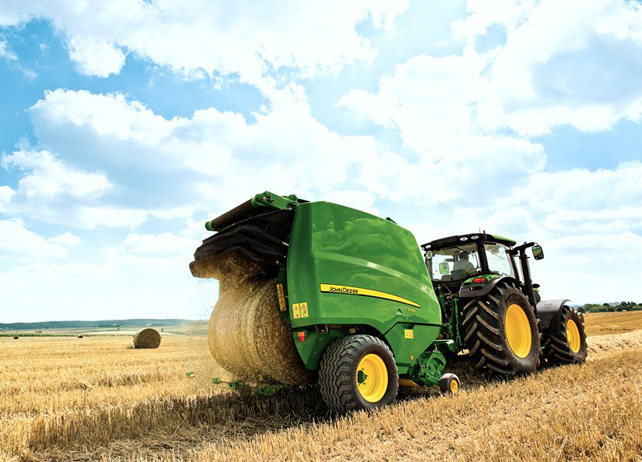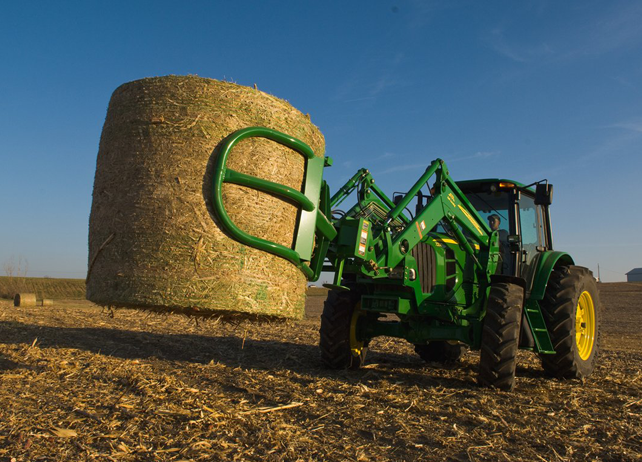Whether producers are looking to feed a few animals on the farm or supply enough nutrients for large herds during the long winter months, the baling process emerges as a critical step in the haymaking process.
While hay farming can come in many different shapes and sizes, we’ve decided to offer a few tips that all hay producers should take into consideration before, during, and after the hay baling process. Some things to remember include:
Ready the field for baling
Before taking to the fields for hay baling, producers need to make sure windrows have been created at optimal widths. This is a major factor especially when using round balers. The width of the windrows should be as close to as wide as (or slightly wider) than the baler pickup. This will allow the hay to be fed into the baler and distributed evenly across the bale. Windrows that are too narrow will likely result in a bale of hale that is much thicker in the center than it is on the ends.
Identify bale type and equipment needed

Before purchasing equipment or taking it out of storage, producers need to determine what type of bales they want to produce. While there are many different sizes, there are two main shapes; round and square. Square bales are often very compact, easy to handle, and can be stored in barns or sheds. When needing to feed more than a few animals, producers should consider round bales. Square balers usually come in two styles; offset and directly behind the tractor. Offset balers are usually preferred as they allow operators to see the crop flow into the baler at a quick glance. For round baling, equipment that produces a tight, high-density, perfectly-shaped bale should be used. Balers should have a wide, low-profile pickup and teeth that are spaced closely together in order to reduce leaf loss.
Be mindful of moisture levels

Failing to properly monitor moisture levels prior to and during baling could result in bales that develop mold. When temperatures warm up, the mold absorbs critical hay nutrients, spoiling the bale. Appropriate moisture levels vary depending on the baler being used. If a round, hard-core baler is being used, usually moisture levels around 15% are optimum. For rectangular bales, moisture levels between 12-16% are generally desired. Take a look at this helpful chart for additional detail.
Set the baler pickup height
The hay baler pickup mechanism should be adjusted for adequate ground clearance. If the mechanism is set too low, the teeth may contact the ground, coming into contact with the ground, rocks, soil, and other debris which could be thrown towards the operator. However, setting the mechanism too high will leave hay on the ground. Finding the right height (teeth just above the ground) is important for operator safety and maximum pickup of hay in the field.
Click here to see more...